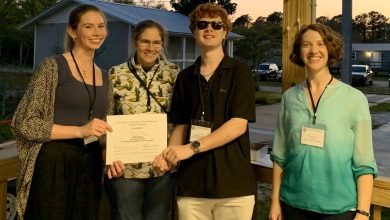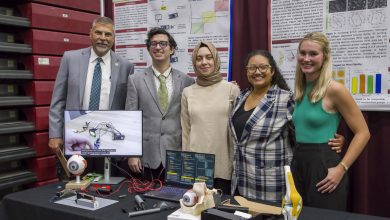College of Science Faculty Take the (Very) Long View
Three Florida Tech Professors Win Time on the Hubble Telescope
MELBOURNE, FLA. — Three members of the Department of Physics and Space Sciences in Florida Institute of Technology’s College of Science have been awarded time on one of America’s most powerful – and famous – research tools: the Hubble Space Telescope.
Professor Eric Perlman and Assistant Professors Véronique Petit and Darin Ragozzine will use their time to study different celestial features.
Perlman won time on the telescope for his proposal, “The Physics of the Jets of Powerful Radio Galaxies and Quasars.” He is also co-investigator on three other proposals that received Hubble time, and one archival proposal.
Jets are high-energy flows of matter and radiation that emerge from the host galaxy’s nuclear regions at nearly the speed of light.
Petit will use Hubble to look at a massive magnetic star as part of her winning proposal, “Probing the extreme wind confinement of the most magnetic O star with COS spectroscopy.” Such observations could not be done with a ground-based telescope.
And Ragozzine, whose winning proposal was, “The Intriguing Formation of Haumea’s Satellites,” will use Hubble to look at the dwarf planet Haumea in the outer solar system. Like a cousin to Pluto, Haumea is a large icy body orbiting the Sun beyond Neptune. Haumea has a very interesting and still confusing formation story and some of the biggest clues are contained in the specific orbits of the two moons of Haumea.
The Hubble is in such demand that each moment of its time is highly sought after, according to the Space Telescope Science Institute, which operates the science program for the telescope. Every year, 1,200 or more proposals from around the world are submitted seeking observation time on the Hubble.
About one-fifth of those proposals end up being chosen.
All three faculty members will be awarded a total of around $100,000 in grant money to support the scientific investigation of the data generated by the Hubble time.
###







